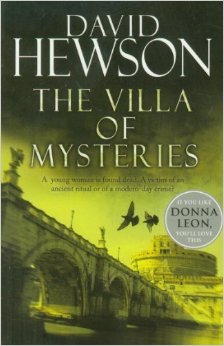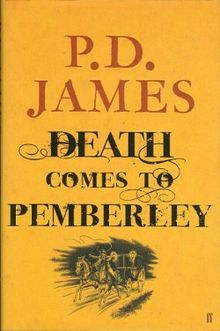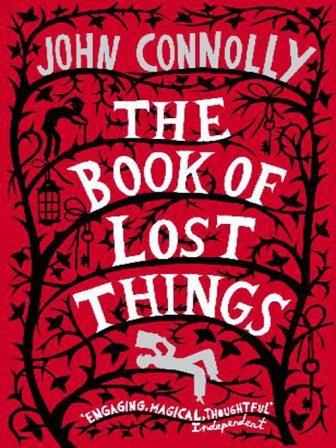
David Hewson has worked as a journalist for most of his life and has written several travel and crime fiction books.
This is the second book in a crime series which features Detective Nic Costa and is set in Rome. Personally, I didn’t find the title or the brilliant green cover appealing and only read this as it was a book group read. Could it possibly be better than it looked?
What’s it about?
Having spent six months recovering from the events of book one in the series, Nic Costa returns to work with a predilection for drink and a new partner who has recently been demoted. They are quickly embroiled in two cases: a dead girl’s body is recovered from the peat and a mother declares her daughter missing. Could the two be related? The physical appearances of the girls and the timing of the two events quickly suggest a connection and the pressure is on to find the second girl before she also turns up dead.
Meanwhile, a local mobster has difficulty controlling his family, another mobster is refusing to talk to the police, the DIA are stalking Inspector Falcone and his detectives, and the team’s pathologist has such difficulty sticking to her job that it seems likely she will get herself killed.
My thoughts on the opening
I found the 20 page long introductory sequence off-putting. A rather unpleasant American couple bicker, ruin their rental car and begin to dig up a dead body without realising that’s what it is; they think it’s a precious, life size statue that they can somehow smuggle home to show off to their equally imbecilic friends. I have no problem with the plot device itself, but I did question why it required twenty pages of explication. I had no desire to know any more about Bobby and Lianne than was strictly necessary and could only assume that the author was lavishing such attention on them because their characters would recur later on. They didn’t. Given that the blurb clearly states that a dead girl is dug up from the peat, the reader’s understanding of the situation is so far ahead of the characters’ that it became annoying to read in an I’m-bored way, rather than an I’m-frustrated-but-excited way.
After this, there is an equally prolonged section during which the pathologist explains why she believes she has a two millennia old corpse on her table. Again, given that this is a crime fiction novel and that the blurb states that this discovery will start ‘an investigation that will take the police deep into the murky underworld of modern-day Rome’s most disturbing and sinister secrets’ the reader KNOWS this cannot really be historical find. This means that the lengthy discussions about Tollund and Grauballe man (actual peat bodies preserved for many years) simply delay the reveal that the reader knows is coming.
Personally, I found this frustrating in a negative sense; I just wanted Hewson to get on with the rest of the story, the bits I didn’t know about. This section is interrupted by introductions to other characters and issues: the newly partnered police officers, the concerned mother and the mob boss’s family. In a way, this added to the sense of a drawn-out opening and made me even less interested in proceedings, but I am quite an impatient person and there is no reason to think that other readers would necessarily feel this way.
What’s it like?
No one character is the main protagonist or focus of the story, which gives Hewson the flexibility to use particular viewpoints as and when they are helpful to develop the plot further. I think this is a strength of the story-telling, especially since I prefer crime fiction to focus primarily on the crime, rather than on the relationships between the investigating officers and their families. While there are some romantic entanglements here (Inspector Falcone has a past with the DIA lead and Nic Costa swiftly develops sexual chemistry with the distraught mother) the main focus really was on solving the crime and every scene, sometimes indirectly, sometimes directly, is leading up to that. Every cast member who is introduced has something to do with the original death and as the storyline developed I found it genuinely interesting to see how each was involved. That said, there were a couple of characters who seemed to be introduced purely to be killed off and used as part of the final reveal, but that is fairly typical of crime fiction and not a significant complaint.
Obviously, as this is set in Rome and there is some speculation around how old the body is, there is quite a lot of historical background. This is relayed to the reader through conversations and can be a little bit repetitive (ok, yes, I understand that this ritual involved sex and drugs) but is fairly interesting and is all (except the earlier discussion of peat bodies) highly relevant to the case. I felt that the historical content was appropriately utilised, which is refreshing as often in historically-informed-fiction the historical detail feels shoved in anywhere it might fit in order to show off how much research the writer has done.
Perhaps conversely, I would have liked to get more of a feel for Rome from a novel which is set there. No matter how often a character rents a flat by Tiber Island or spots some carabinieri eating prosciutto, I never had the sense that I was in Rome. On the plus side, this means there are no lengthy scenic descriptions that detract from the pace of the plot or result in me skimming passages impatiently. I would have liked a little more detail, but realistically, if you work in Rome, as these detectives do, you’re hardly going to take time out from questioning your witness to reflect on the colour of the city walls or the sound of the traffic.
My thoughts on the ending
The plot picks up pace as you read through and it becomes clear that everyone has something to hide. I found the ending itself interesting and thought that it mostly worked, although it is quite a twist. It helps that the reader can see it coming before one of the main characters so has time to begin re-thinking the case. However, the specific way the story is told I found extremely confusing in places due to the involvement of drugs. I found it impossible to work out what was real and what was a hallucination. There is a brief epilogue of sorts, but it still doesn’t fully explain what happened in the final showdown and what exactly one of the characters was trying to achieve.
I suppose the loose ends make the story a little more true to life and therefore realistic, but if I were being more cynical I would suggest that Hewson doesn’t quite know how to make the disparate bits of the story fit together and so has not even bothered to try. Because of the slightly disjointed nature of the ending, I did find the ending a little disappointing. However, I did find it quite interesting to reread snippets from earlier in the book in light of the knowledge gained at the end and I didn’t feel that it ruined my overall enjoyment of the story. Furthermore, I really liked the final realisation on the last page. It’s a really ‘duh!’ moment that, again, forces the reader to re-evaluate what they have read before. I thought this was an effective way to close the story.
Final thoughts
• I found this story very slow to get started and thought it could have either moved more quickly or revealed less information in the blurb.
• The characters were suitably developed and changed as the storyline developed which helped to make the reading experience interesting.
• The actual resolution was a little far-fetched but understandable and made use of all the threads set up during the story, so I liked the way that everything and everyone came together at the end.
• I didn’t find this compelling reading because there was something about the way it was written that didn’t really ‘grab’ me but it works well as a police procedural with a historical background.
• The book is organised into three or four very lengthy sections and there are no chapters within these sections, which I don’t really like as it can be difficult to find a suitable stopping place. However, these sections are further broken down into different scenes, so the actual scenes are a reasonable length.
• Although the story involves sex, violence and drug taking, there is nothing explicitly gory or difficult to read so it should still suit a wide audience.
So who would it suit? According to the sticker on the cover, fans of Donna Leon will love this. Not having read anything by Leon myself, I can’t comment on the accuracy of that statement. I think it would suit most fans of crime fiction as the storyline is well-focused on the crime itself rather than getting too caught-up in the love lives of the officers and the twist is surprising but plausible. I also like that, unlike in some series, there were no cliff hangers or major hints about what will happen in the next book to urge you to keep reading. I like this because it means that this book can happily be read as a standalone crime novel, which is what I did, and because it means the writer is trusting that their writing style can persuade you to keep an eye out for their name in future, rather than relying on a great big cliff hanger.
Whilst I will not be actively seeking out another book by Hewson, this is largely because I have a teetering To Be Read pile by my bed already and cannot even think about adding another one to the stack without being at risk of a landslide in the middle of the night. I would, however, happily read another book in this series at some point.


